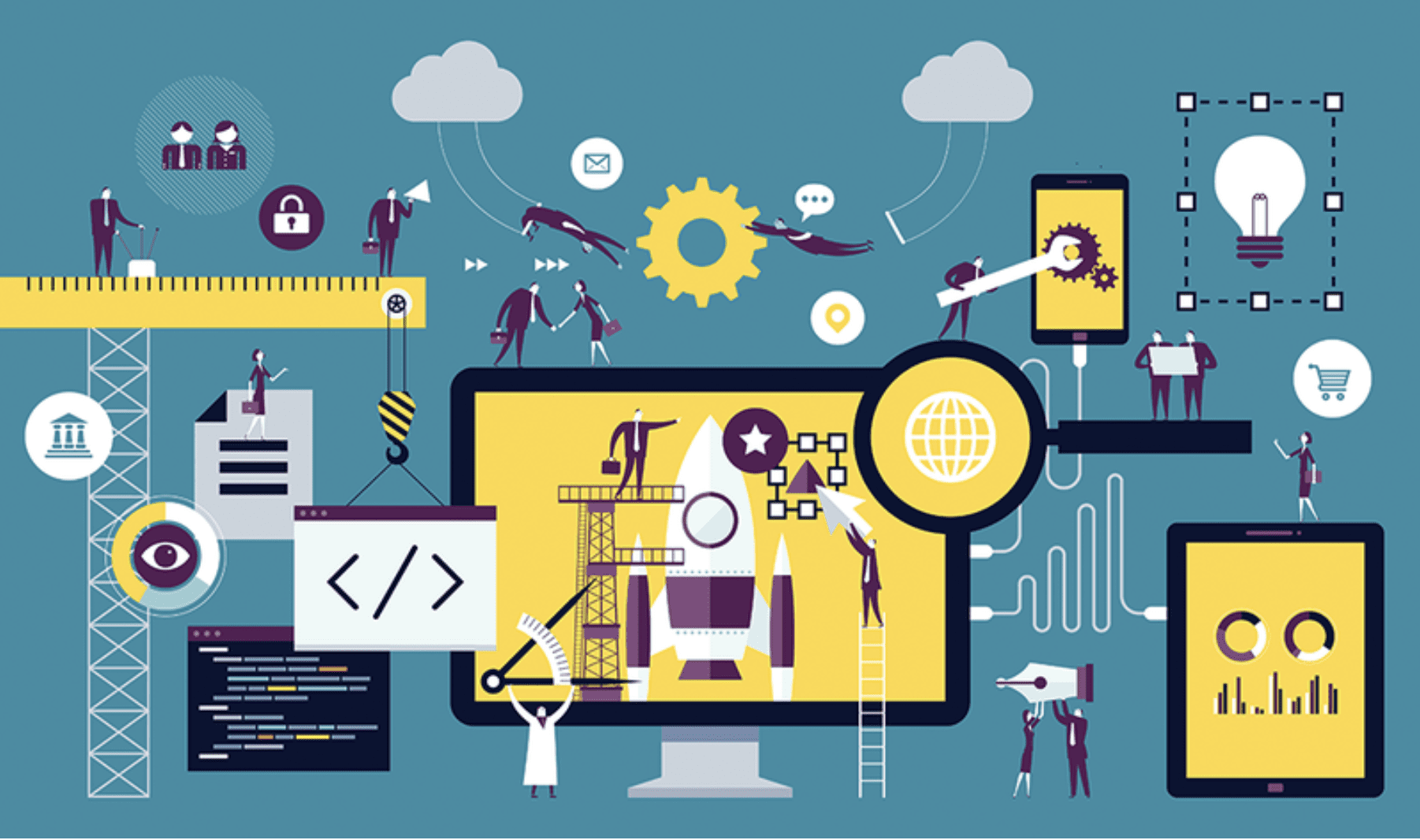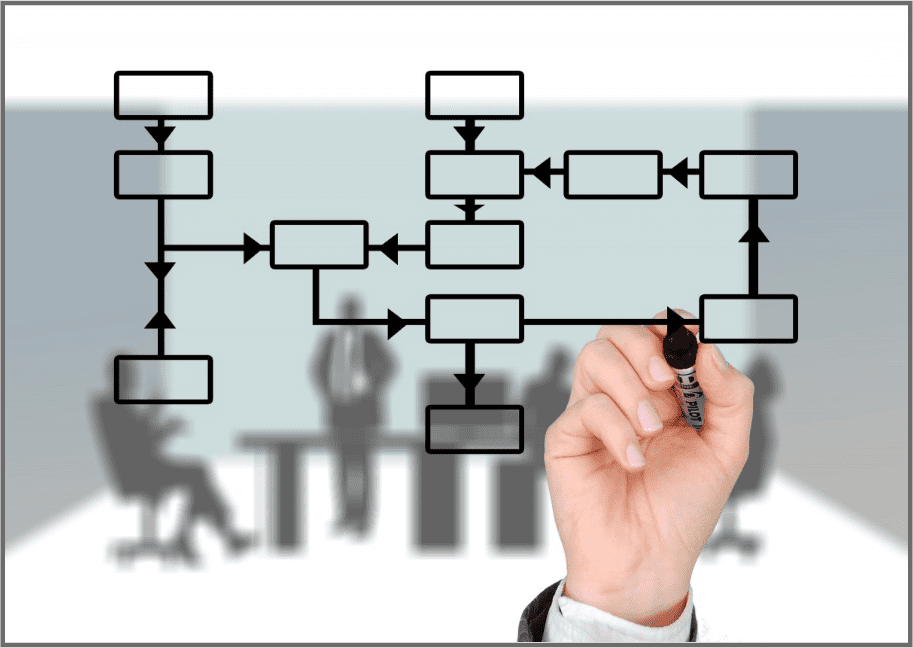The IT Service Management (ITSM) philosophy has transformed the way that organizations deploy their IT resources. Enterprise Service Management (ESM) takes this a step further, exploring how these same practices can be extended across the business to unlock organization-wide efficiencies and drive the digital transformation journey forwards.
But what exactly are ITSM and ESM? And what are the key differences between the two approaches?
What is covered in this blog post:
- What is IT Service Management?
- What is Enterprise Service Management?
- Enterprise Service Management implementations and ESM tools
- ITSM vs. ESM
- Enabling Digital Transformation with ESM
- Conclusion
What is IT Service Management?

ITSM is a strategic approach to the delivery of IT services to customers, on an end-to-end basis. There’s more to it than the name might immediately suggest, though.
The key thing, though, is that ITSM focuses on the delivery of services to customers or other stakeholders, rather than simply the management of hardware and software assets and servers.
By assessing the full life-cycle of the interactions that the department engages in and all the processes involved – from conception to delivery and on to support – the team is able to deliver a more effective service and to address inefficiencies, waste, and breakdowns in the workflow. This stops services from being reliant on team members switching between different platforms and remembering to complete tasks. Instead, everything is centralized and tasks are set within an optimized workflow, heading toward completion.
Additionally, anticipating issues and planning ahead means that incidents and issues can be resolved more quickly, or prevented from occurring entirely, and disruption can hence be minimized.
This should boost productivity and improve customer satisfaction levels, whether for internal or external audiences (and extending to parties such as contractors and suppliers) and across IT responsibilities such as service requests, change management, asset management, and incident responses. Ultimately, deploying ITSM should mean that the department can deliver significantly better results at notably less cost.
One notable standard for ITSM is the Information Technology Infrastructure Library (ITIL), which has formalized IT best practices with a series of books and has been adopted by firms like Spotify and Disney. More recent iterations of ITSM have also incorporated practices such as agile working and DevOps, with an increased focus on user-centricity, agility, and collaboration.
Service desk platforms often play a core part in ITSM programs, housing a knowledge base and acting as a starting point for user interactions with the IT department. This enables self-service and the tracking and streamlining of workflows and the automation of tasks – as well as facilitating organization-wide collaboration.
What is Enterprise Service Management?

ESM (sometimes called beyond ITSM) is an extension of ITSM and its principles to facilitate enhanced delivery for teams outside the IT department and across the enterprise – such as in marketing, finance, customer service, HR, and legal.
The core philosophy of ESM is that services and processes should be prioritized, tracked, and carried out systematically and consistently. By building on ITSM principles and taking them beyond strictly technical use cases, ESM enables teams to more effectively manage demand and delivery for their services, driving broad operational efficiencies. When deployed on an organization-wide level, ESM can help to define services across the business, enabling a holistic view of process and workflow optimization.
Creating a single, centralized source of truth also saves on the checking and logging of requests and information as it is transferred between different departments, also making it easier to identify when issues are recurring, meaning that they can be escalated and addressed.
What makes ESM distinct from previous innovations is that it brings together service operations from across departments and manages them centrally – thereby unlocking enhanced collaboration and greater economies of scale across the business.
Enterprise Service Management implementations and ESM tools
As an example of how this might be deployed, the HR team could use an ESM approach to create a hiring and onboarding workflow. The hiring manager could be automatically notified as candidates apply and can then progress approved applicants through the relevant review stages. When a decision has been made, the hiring manager can then issue contracts and set in motion steps to dispatch IT hardware, prepare a workstation and provide secure access, as well as give the new staff member access to the organization’s knowledge hub and all the information that they will need to familiarize themselves with the business and their department.
This presents an example of how one unit connects with departments across the organization, but customer service teams are actually the most common users of shared service management tools. These systems help to surface issues that may help customers to resolve their own issues, before placing them on a workflow that allows their query to be assessed and addressed and directed to the most appropriate team in the organization. This presents a simpler workflow, but it may be even more important in sectors where customer relationships are key.
ESM typically requires the deployment of enterprise-level service management tools to enable the process. Very often, an IT department using ITSM will have a service management solution in place, which can then be scaled up to be used across the business.
Atlassian cites the use case applied by AppDynamics, which used Jira Service Management in its HR department to reportedly onboard 700 new staff members in a year. Atlassian itself apparently has some 130 internal service desks driving its business operations.
ITSM vs. ESM

A key part of ESM is applying ITSM structures and frameworks beyond IT and technology services and into the rest of the business.
It’s worth keeping in mind that ESM doesn’t replace ITSM, but simply makes further use of its principles, and the two are often used in tandem, with one extending from the other. It wouldn’t be impossible to deploy ESM without ITSM, but it would be highly unusual to exclude the IT department from the opportunities that the approach can offer.
When deployed effectively, ITSM can help to standardize services, simplify workflows and bring teams into alignment. This can help teams to quantifiable achieve better results and to be more responsive. ESM then transplants the most relevant of these principles onto departments across the business. While a tactical, department-by-department approach might be considered, launching a full-fledged organizational strategy is likely to achieve better results as the organization moves forward, as one rather than setting out on a scattered series of one-off process changes.
Depending on the context, some practices may not be suitable for every department in a given organization, and – whereas ITSM is fairly standard – it may need to take different considerations into account on a department-by-department basis. That said, some ITSM principles are appropriate for adoption on a universal basis in the enterprise, however – such as creating a knowledge management center and portal and a service catalog. This gives employees access to a shared, transparent information portal, mapping services and processes in a shared language, as well as helping staff members to direct requests for assistance to the relevant teams and individuals in the organization.
It’s also worth considering emerging technologies and practices so that your ESM strategy is a step ahead, rather than being a step behind – and potentially outdated at inception.
Enabling Digital Transformation with ESM

ESM isn’t digital transformation in and of itself, but it can be a powerful accelerator. The two have plenty of crossovers and the common practice of building ESM on the back of ITSM means that digital services will inevitably form the backbone of the connected business.
Creating consistent workflows across departments breaks down internal silos between business units. By defining services and processes, organizations are then able to unlock opportunities for automation (both within and across departments), boosting efficiency and ensuring consistency by cutting out the need for error-prone manual work. Having a shared knowledge management center, meanwhile, means that there’s an always-available information portal on hand.
Defining services in a digital catalog, additionally, means that they can be centralized, tracked, and streamlined – reducing duplication and inefficiency.
ESM also helps to accelerate tasks by enabling knowledge sharing. Giving employees access to shared information resources and FAQs builds self-service into the system (and tools like Jira Service Management can surface and recommend potentially relevant and useful content as queries are being entered). If further assistance is needed, the system can then direct the user to the most relevant individuals.
As well as optimizing external customer engagement mechanisms, effectively deployed ESM can also address the increasing expectations of employees as internal customers, anticipating the frictionless delivery of processes and services that they experience as consumers.
The digitally mapped organization is then also far better placed to introduce new products and services into its systems and to develop and improve its processes on an iterative basis.
Conclusion
The saying goes that you can improve what you can measure; ESM enables this within the processes of the business, inventorying the services and workflows in play so that tasks can be carried out more quickly, more consistently, and more efficiently while unlocking new opportunities for automation. As added benefits, the approach is transparent by nature and can cut friction for cross-departmental collaboration – helping the organization to do more with less, while simultaneously boosting customer satisfaction and driving continual improvement.
Scaling ITSM to ESM also gives the IT department the opportunity to evangelize best practices and benchmark successes, as well as integrate digital services across the organization – helping the organization to further progress along its path to digital transformation.
Jira Service Management is an ideal platform to deploy an ESM program, and it comes with the benefits of both Atlassian’s rich library of apps and integrations and Jira’s extensive, built-in capacity for customization and extension. All of this means that you can tailor the platform to the precise requirements of your organization as you deploy ESM at scale.
Recommended Reads:


